ĐIỀU TRỊ TOÀN DIỆN CHO BỆNH NHÂN UNG THƯ BIỂU MÔ TẾ BÀO SÁNG NGUỒN GỐC RĂNG HÀM TRÊN
Nội dung chính của bài viết
Tóm tắt
Đặt vấn đề: Ung thư biểu mô tế bào sáng nguồn gốc răng của xương hàm là một loại u nguồn gốc răng ác tính hiếm gặp. Sau khi cắt tổn thương rộng rãi sẽ để lại khuyết hổng lớn bao gồm cả xương, răng, và phần mềm lân cận. Để khôi phục được cả chức năng và thẩm mỹ, bệnh nhân cần được lên kế hoạch điều trị toàn diện, bao gồm tái tạo giải phẫu, che phủ khuyết hổng, và cải thiện chất lượng cuộc sống. Vì vậy, tạo hình bằng vạt da cơ xương mác vi phẫu kết hợp với phục hình răng trên implant với sự hỗ trợ của ghép khung da vô bào dị loài đã được đề xuất như là một phương án mới và hiệu quả trong điều trị. Phương pháp nghiên cứu: Báo cáo ca lâm sàng và hồi cứu y văn. Kết quả: Sau hai lần phẫu thuật và một lần cắm implant nha khoa, bệnh nhân đã được tái tạo tối ưu về cả thẩm mỹ và chức năng. Các hoạt động ăn, nhai, và nói được duy trì tương tự như trước khi phẫu thuật. Sau thời gian theo dõi 18 tháng, chưa phát hiện tổn thương tái phát hay các biến chứng liên quan đến phẫu thuật và vật liệu phục hình. Kết luận: Các phương pháp tiên tiến bao gồm vi phẫu thuật và ứng dụng khung da vô bào di loài hứa hẹn sẽ nâng cao hiệu quả điều trị và cải thiện chất lượng cuộc sống cho các bệnh nhân bị khuyết đoạn xương hàm lớn và cần được ghép lợi bám dính cho phục hình răng.
Chi tiết bài viết
Từ khóa
ung thư biểu mô tế bào sáng nguồn gốc răng, vạt xương mác tự do, phục hình răng dựa trên implant, mảnh ghép khung da vô bào dị loài
Tài liệu tham khảo
2. Zhang J, Liu L, Pan J, et al. Clear cell odontogenic carcinoma: report of 6 cases and review of the literature. Med Oncol Northwood Lond Engl. 2011;28 Suppl 1:S626-633. doi:10.1007/s12032-010-9668-z
3. Otomo-Corgel J, Ahn CD, Gunn A. Acellular Dermal Matrix Allografts in Periodontal Therapy. J Calif Dent Assoc. 2018;46(10):639-645. doi:10. 1080/19424396.2018.12222082
4. Santana T, de Andrade FL, de Sousa Melo MC, da Rocha GBL, Trierveiler M. Clear Cell Odontogenic Carcinoma Harboring the EWSR1-ATF1 Fusion Gene: Report of a Rare Case. Head Neck Pathol. 2020;14(3):847-851. doi:10.1007/ s12105-019-01103-4
5. Infante-Cossio P, Torres-Carranza E, Gonzalez-Perez LM, Gonzalez-Cardero E, Sanchez-Gallego F. Atypical presentation of clear cell odontogenic carcinoma. J Craniofac Surg. 2012;23(5): e466-468. doi:10.1097/SCS. 0b013e31825757d4
6. Labrador AJP, Marin NRG, Valdez LHM, et al. Clear Cell Odontogenic Carcinoma a Systematic Review. Head Neck Pathol. 2022;16(3):838-848. doi:10.1007/s12105-021-01383-9
7. Rieger JM, Tang JAL, Wolfaardt J, Harris J, Seikaly H. Comparison of speech and aesthetic outcomes in patients with maxillary reconstruction versus maxillary obturators after maxillectomy. J Otolaryngol - Head Neck Surg J Oto-Rhino-Laryngol Chir Cervico-Faciale. 2011;40(1):40-47.
8. Chang YM, Wallace CG, Tsai CY, Shen YF, Hsu YM, Wei FC. Dental implant outcome after primary implantation into double-barreled fibula osteoseptocutaneous free flap-reconstructed mandible. Plast Reconstr Surg. 2011;128(6):1220-1228. doi:10.1097/PRS.0b013e318230c6a9


